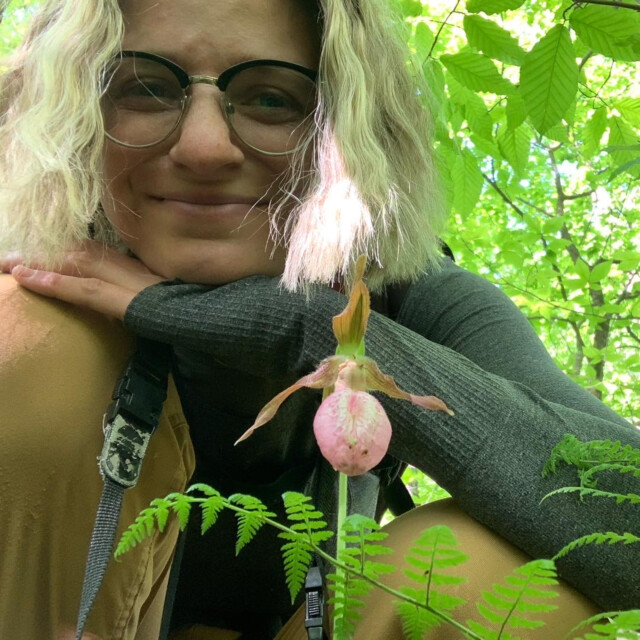Saskatchewan Cranes & Geese Trip Report (Oct 1 – 6, 2025)
Alyssa DeRubeis and Sarah Lamond guided a group of 12 participants from October 2-5, 2025. We birded around Saskatoon the first two days, then headed north to Prince Albert National Park (NP) for the last two days. Nestled in the heart of the Canadian Prairie Pothole Region, we poked around many wetlands and lakes surrounded by grasslands and row crops. Saskatoon featured deciduous forest edge, and further north we explored mixed conifer-deciduous forest and a tamarack bog. Of the 99 species we observed, several bird groups were particularly diverse: all 5 geese, 15 ducks, 9 shorebirds, 7 raptors, and 9 sparrows. Mammals also entertained us; highlights included Elk, Moose, and numerous Coyotes.
Day 1: Marcelin
The bird that makes this tour so popular is the Globally Endangered Whooping Crane. So naturally that was our very first stop on our very first day. The towns of Marcelin and Leask serve as a major migratory stopover area for Whooping Cranes and copious other waterbirds. Everywhere we went, our ears were filled with the high-pitched honks of thousands of Snow, Ross’s, and Cackling Geese. Some geese loafed close enough to the roads where we could notice the drastic size and shape differences between Snow and Ross’s Geese, and Canada and Cackling Geese.
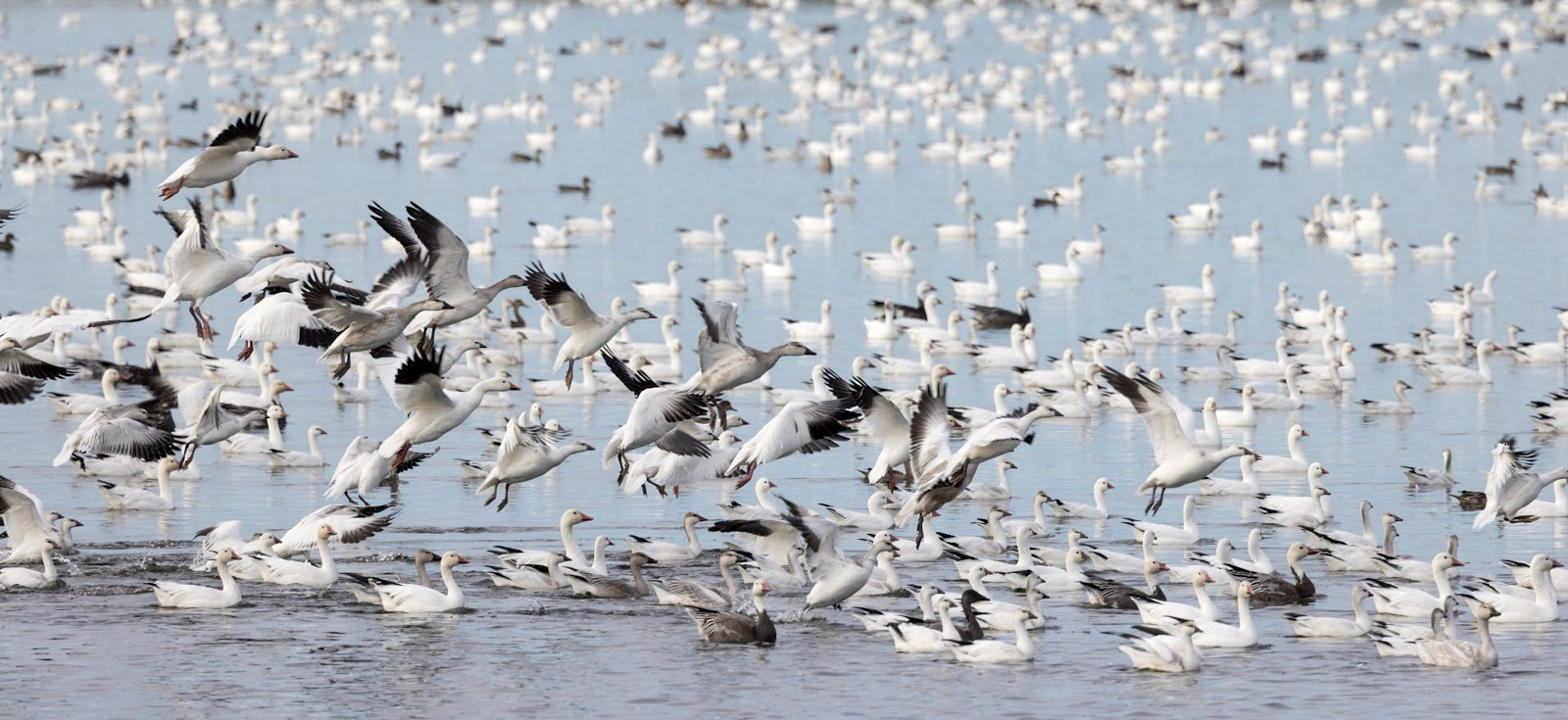
Snow and Ross’s Geese © Carol Holmes
It didn’t take long to locate the Whooping Cranes, a.k.a. North America’s tallest bird. Some cranes were in small family groups of two parents and one brown-marbled juvenile, whereas others formed flocks of 50+ birds. All in all we tallied roughly 100 Whooping Cranes that day, which accounts for an astounding 15% of the wild population! We were fortunate to hear their resonant baritone cries and to see these goliath birds in flight. Fingers crossed they make it safely down to Aransas National Wildlife Refuge in Texas this winter!
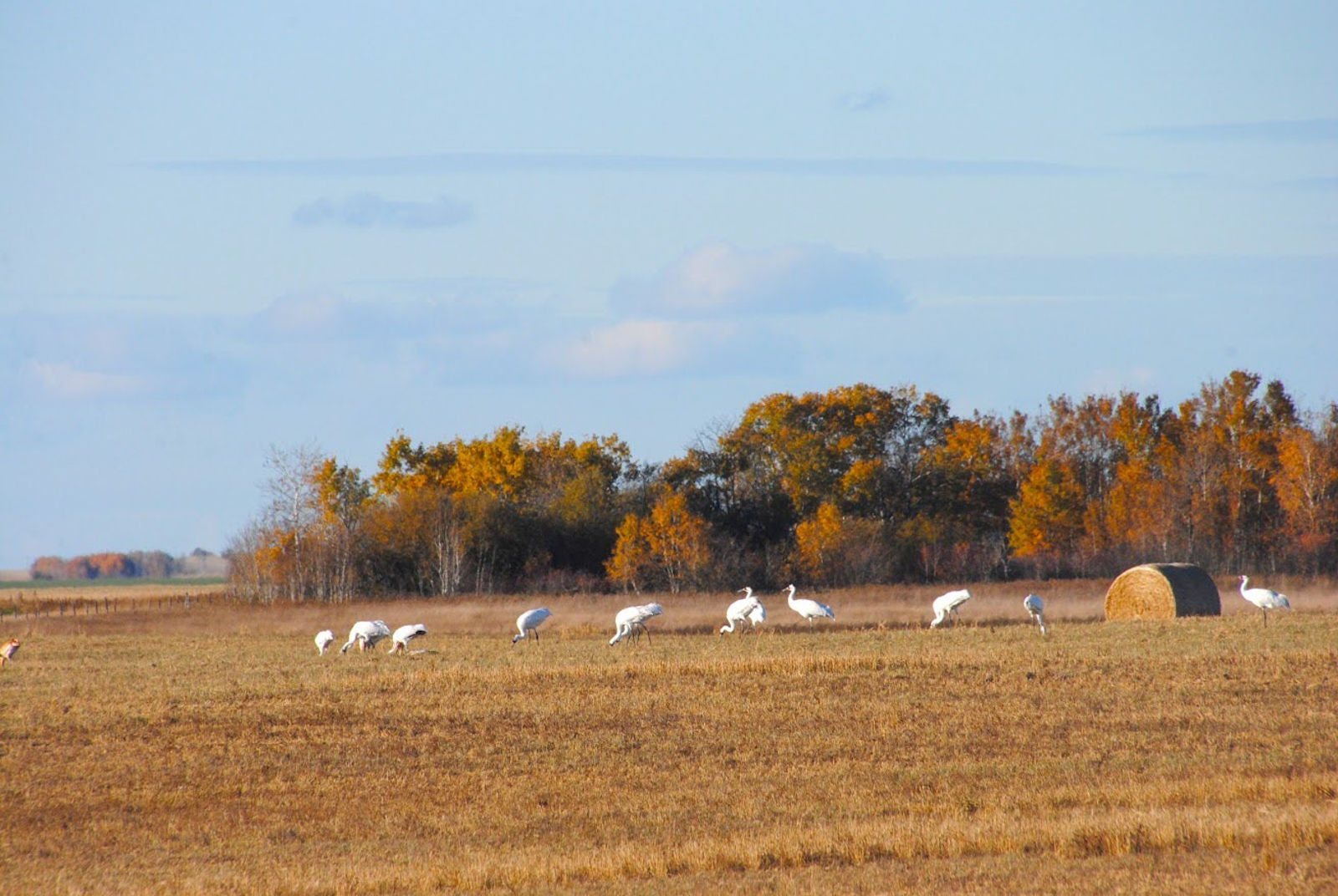
Whooping Crane flock © Alyssa DeRubeis
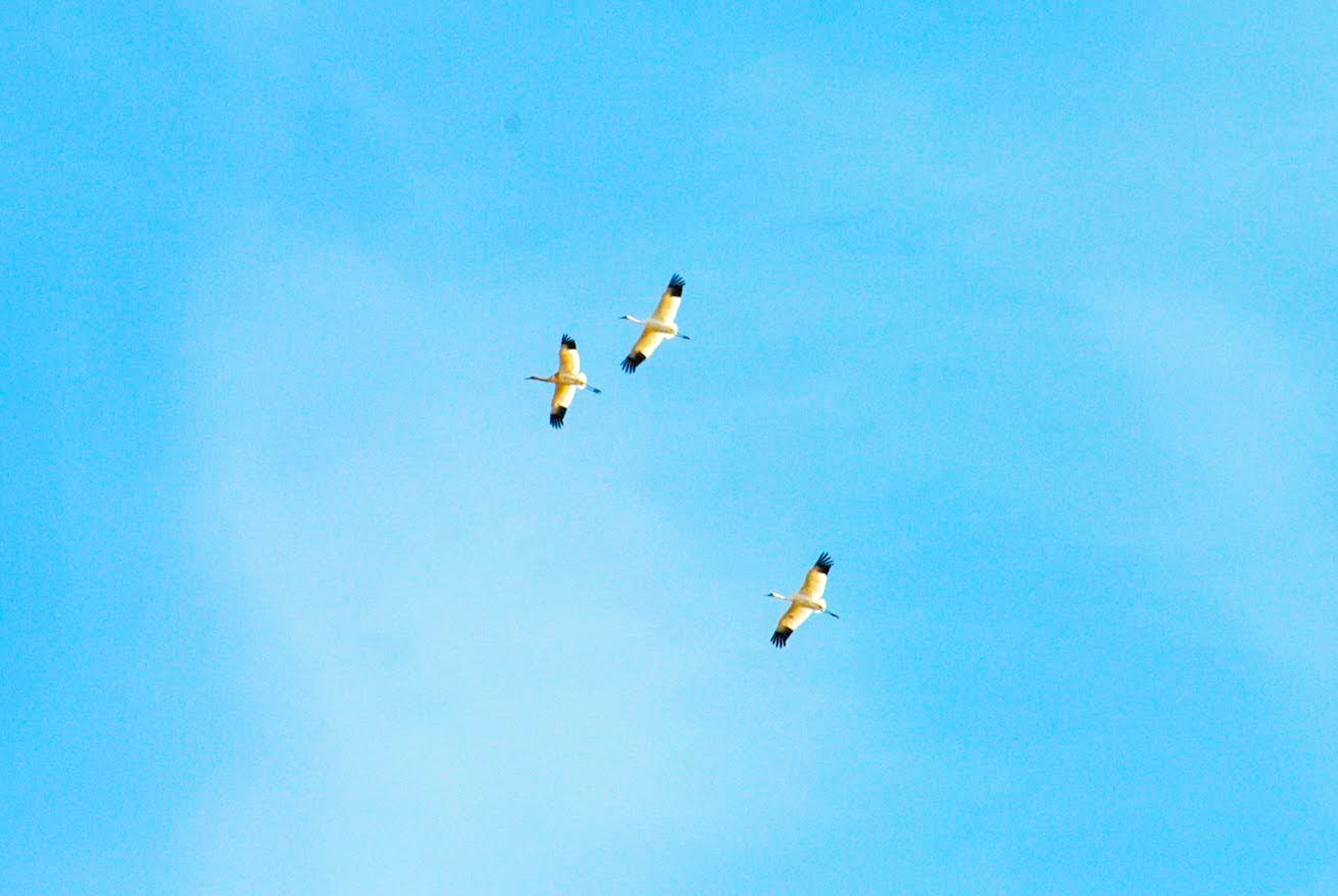
Whooping Cranes kettling © Alyssa DeRubeis
Day 2: Saskatoon and South
Conveniently, our hotel was situated adjacent to the South Saskatchewan River. The trail system in this urban bird migration corridor was rife with dogwood berries.
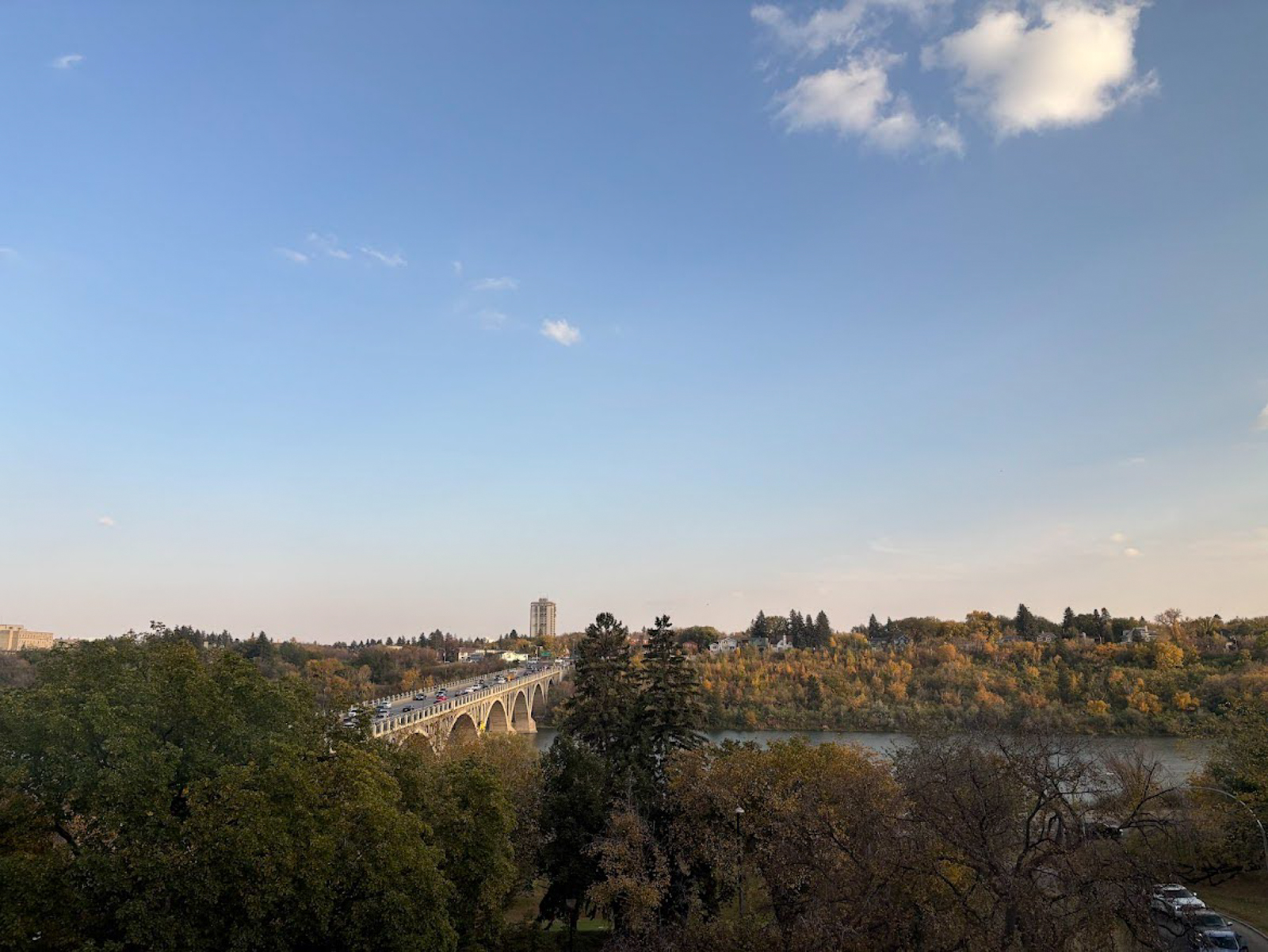
View of the South Saskatchewan River and University Bridge from our hotel rooms © Alyssa DeRubeis
Alongside the berries were hungry sparrows, like Dark-eyed Junco, Chipping, Song, and Lincoln’s Sparrows, plus the “Zonotrichia Trifecta.” It consists of all three inland species within this genus of large, plump, and long-tailed sparrows: White-throated, White-crowned, and a shy Harris’s Sparrow. They were busily chirping, scratching, chasing, and flying upstream.
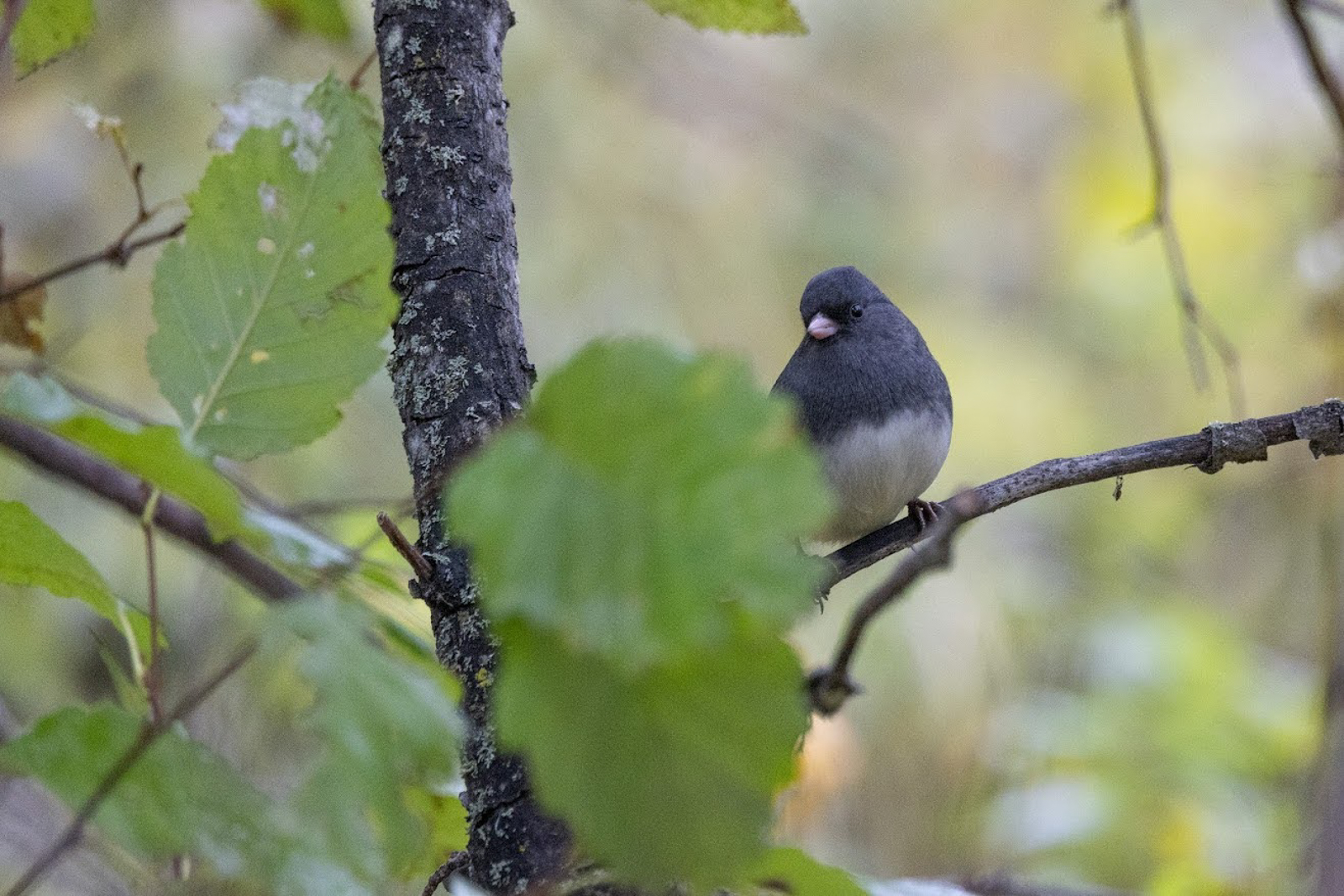
Dark-eyed Junco © Carol Holmes
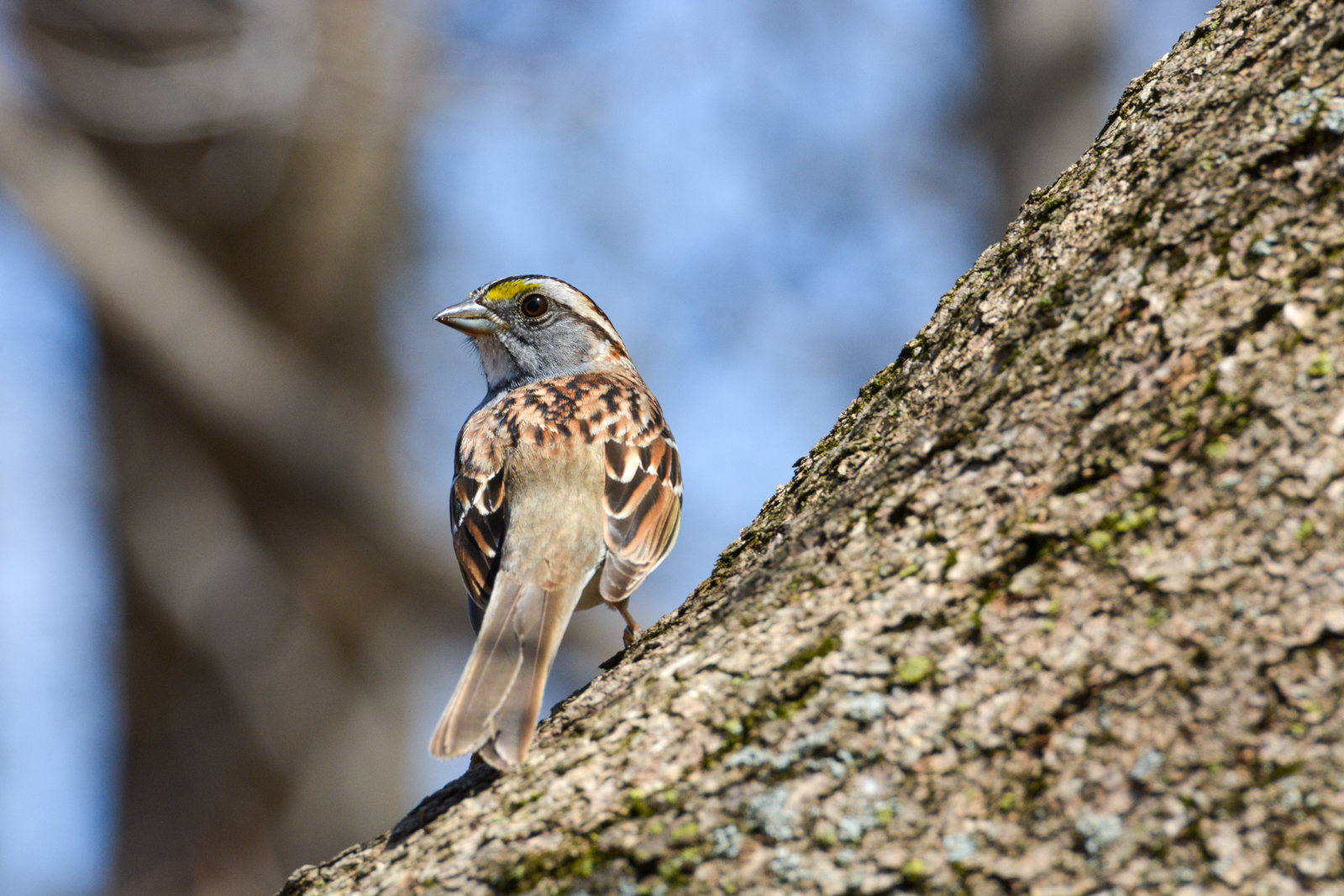
White-throated Sparrow © Alyssa DeRubeis
When walking back to our hotel, we intersected another migratory flock, but this time it was a smorgasbord of warblers, sparrows, Ruby-crowned Kinglet, Purple Finch, and Northern Flicker. All of these species are cold-hardy and short-distance migrants that only go as far south as the southern United States for the non-breeding season; some even stay as far north as Saskatoon.
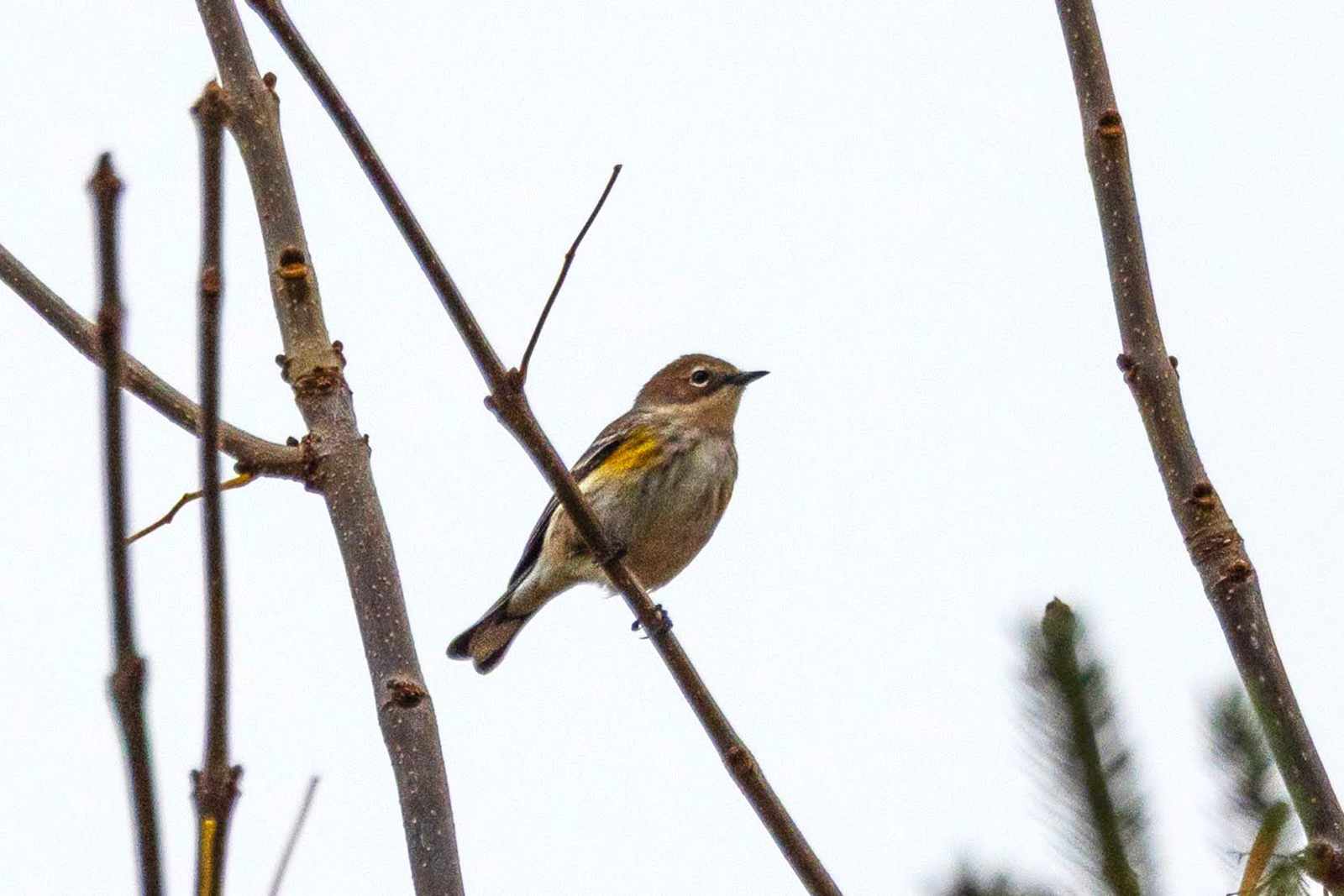
Yellow-rumped Warbler © Carol Holmes
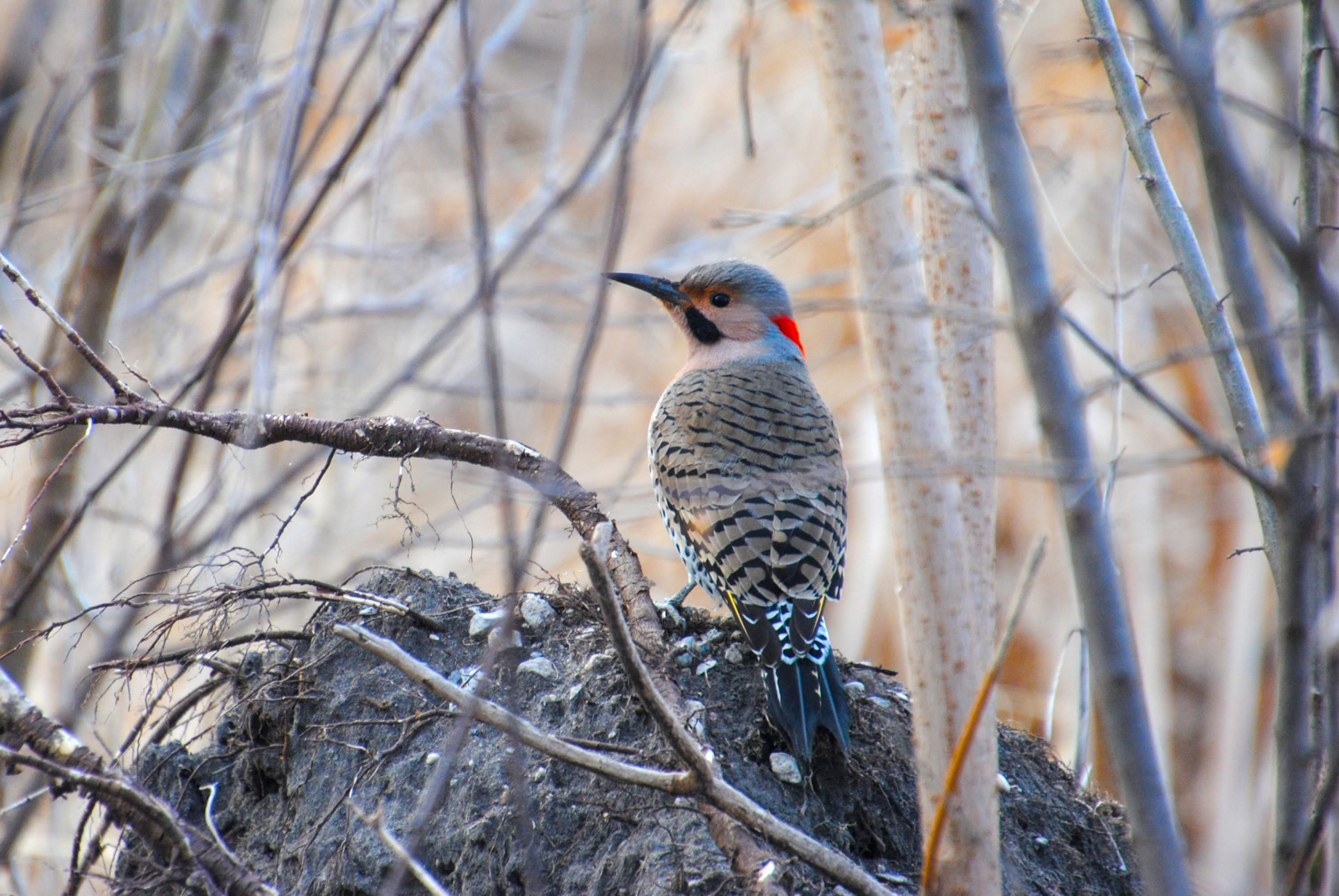
Northern Flicker © Alyssa DeRubeis
For the afternoon, we ventured south of town to Blackstrap Lake. The longer we spent scanning the choppy water, the more birds we found: scores of Bufflehead and Redhead, four grebe species (which made for some great practice in identifying distant grebes!), aerially-foraging Franklin’s and Bonaparte’s Gulls and Lapland Longspur, and a lingering Common Tern.
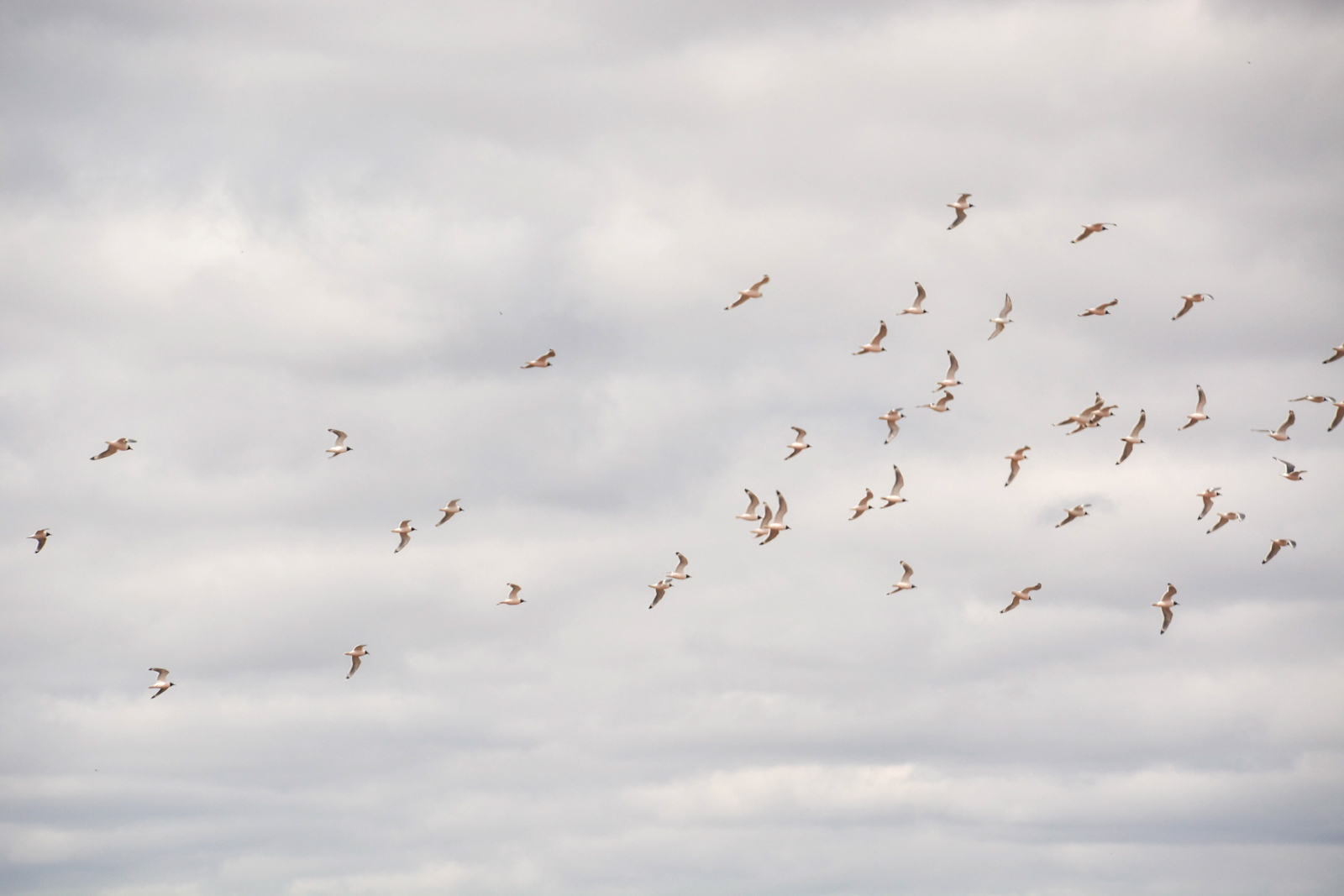
Franklin’s Gulls © Alyssa DeRubeis
While exploring some of the back roads around Shields and Clavet, we stumbled upon a covey of Gray Partridge and a field of roosting Sandhill Cranes. We were thrilled to see these light gray beauties!
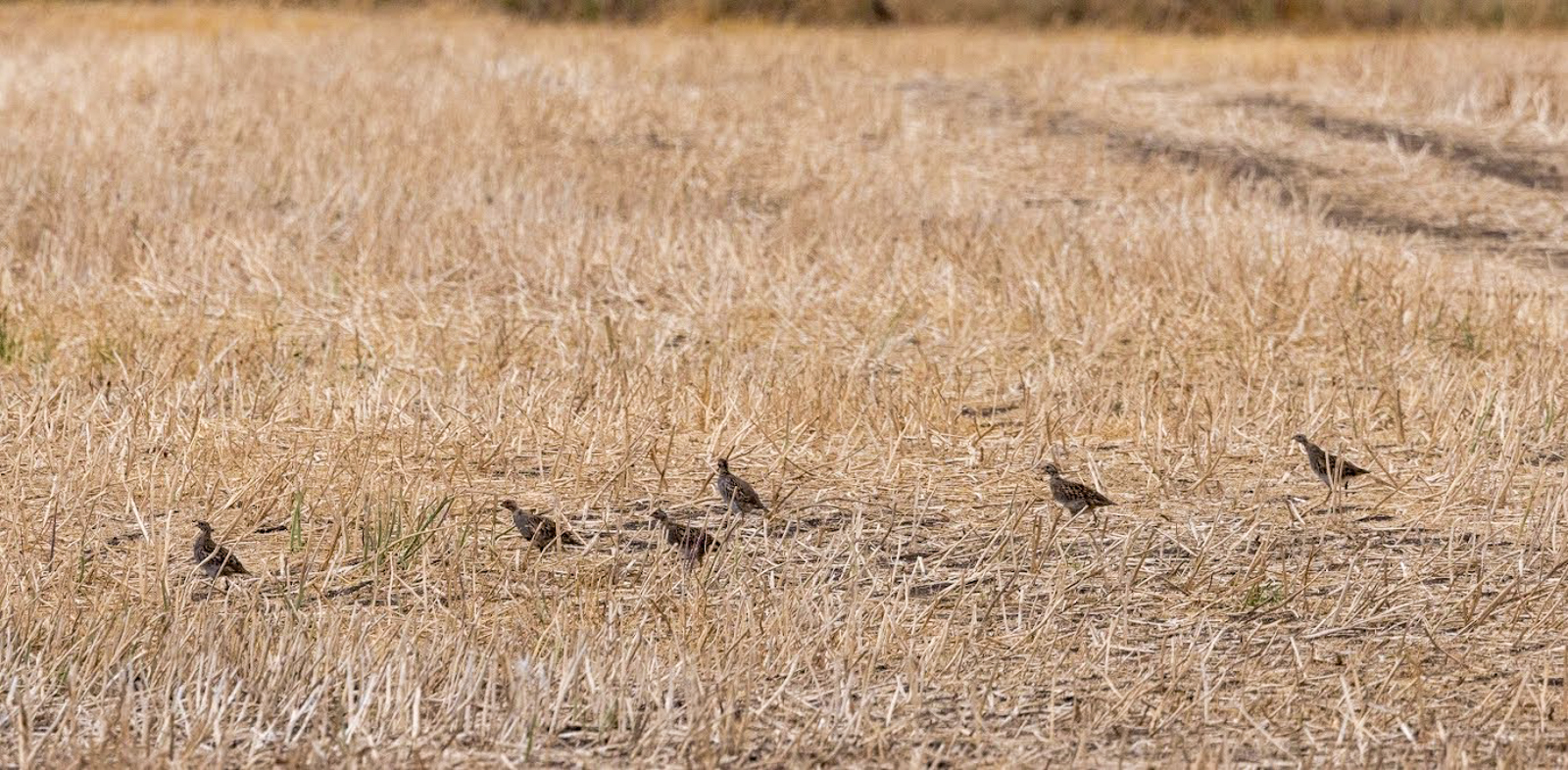
Gray Partridge © Carol Holmes
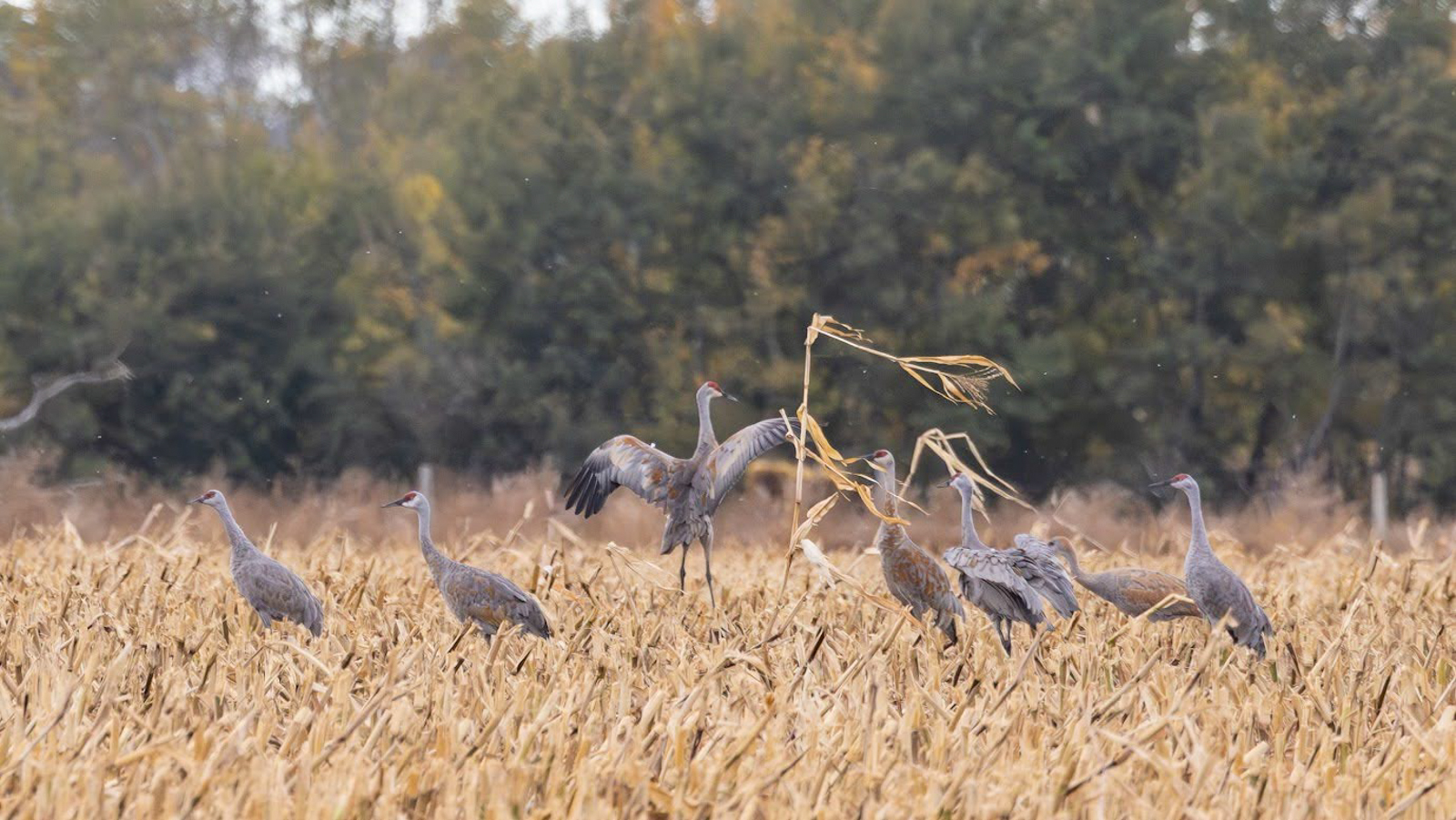
Sandhill Cranes © Carol Holmes
At our last stop for the day, overcast skies gave way to sun, and we appreciated the evening glow on vocal Tundra Swans, gobs of Northern Pintail, and 7 species of shorebird. Fall migration appears to be running late this year, which meant we enjoyed an unseasonably high diversity of plovers and sandpipers.
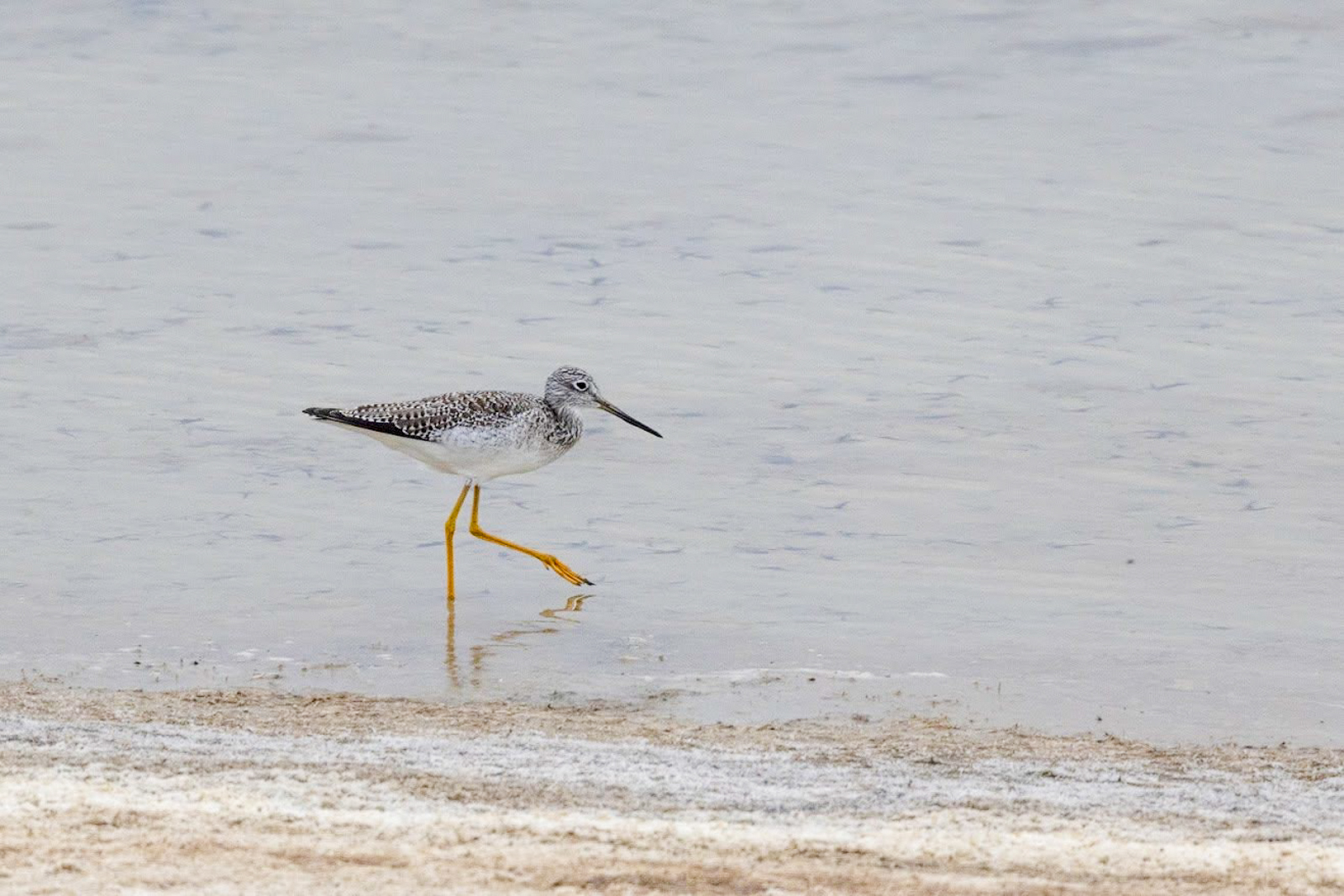
Greater Yellowlegs © Carol Holmes
Day 3: Trek Up to Prince Albert NP
Birds are almost always our main focus, except for when mammals steal the show! This was by far our best day for observing charismatic megafauna: Coyotes were a common sight and were rather photogenic in the fields between Prud’Homme and Smuts. We only saw single Coyotes, some of which were quite small, likely young pups born this summer.
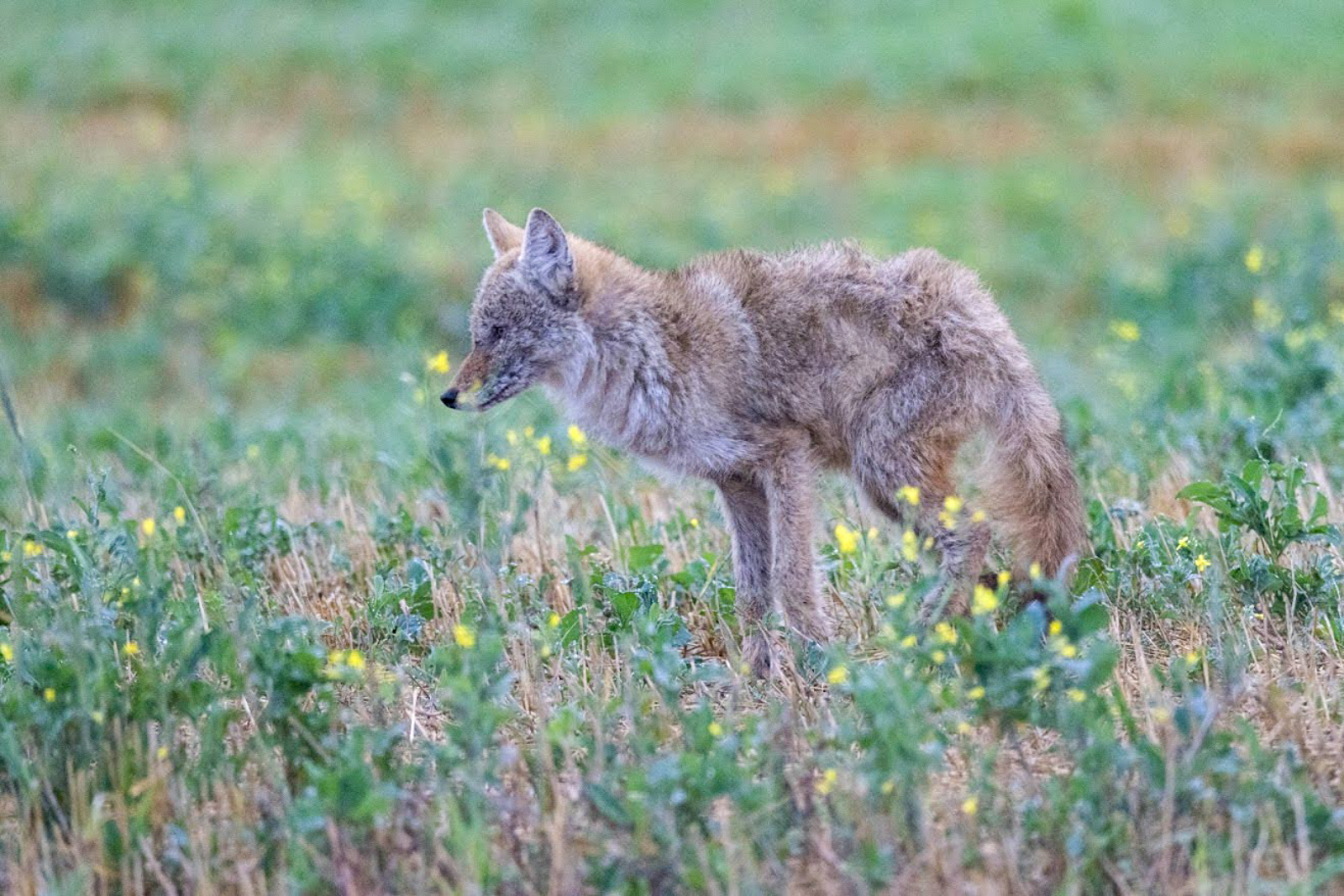
Coyote © Carol Holmes
Romance was also in the air as we admired a courting pair of Moose near Buffer Lake. The cow would trot away slowly while the young bull followed at a distance. The world’s largest deer is not a guaranteed sighting on these tours. Lucky us!
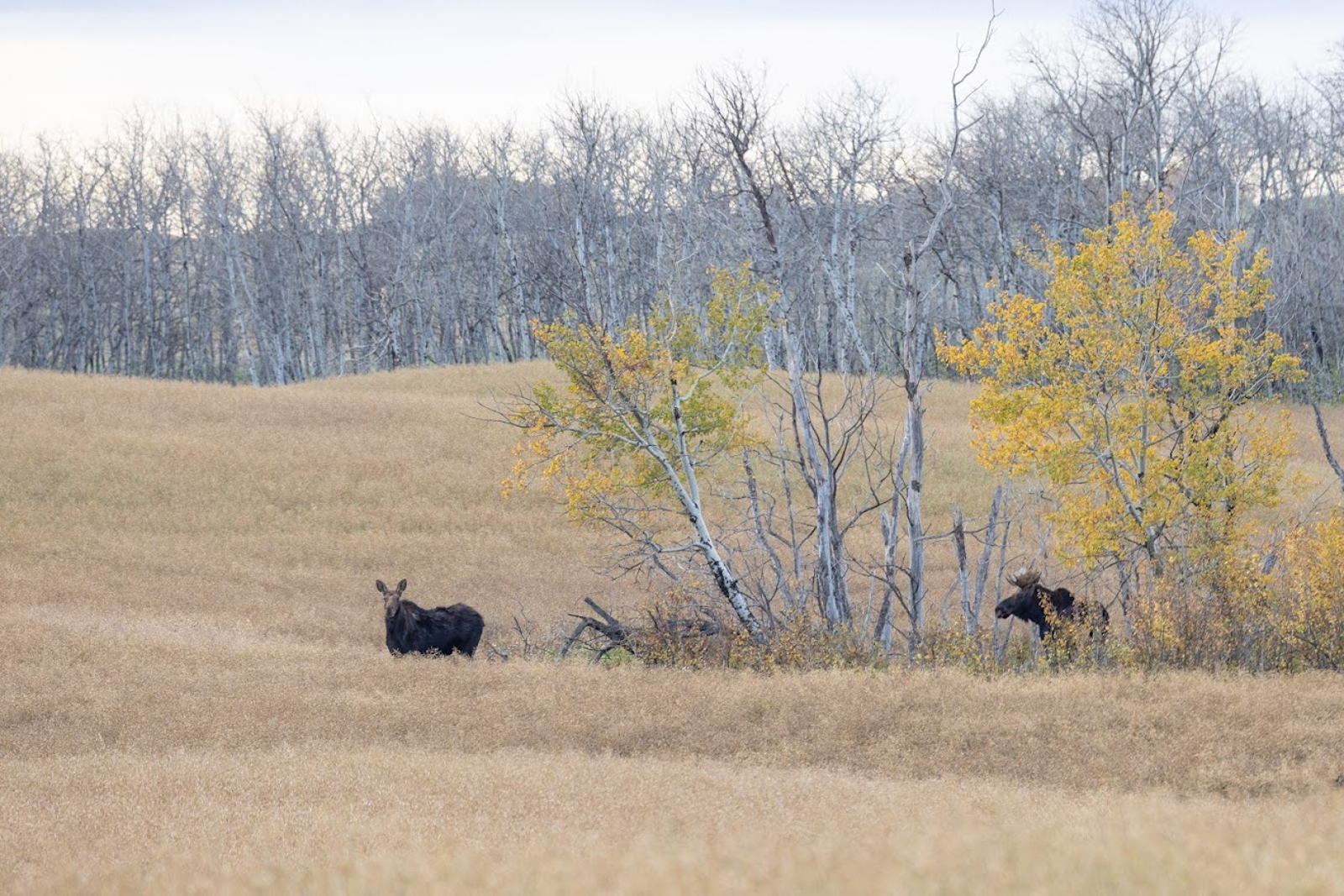
Moose pair © Carol Holmes
And once we got to Waskesiu Lake, we crossed paths with multiple bull Elks. These big-antlered deer were not phased at all by our presence, so we got long-lasting views.
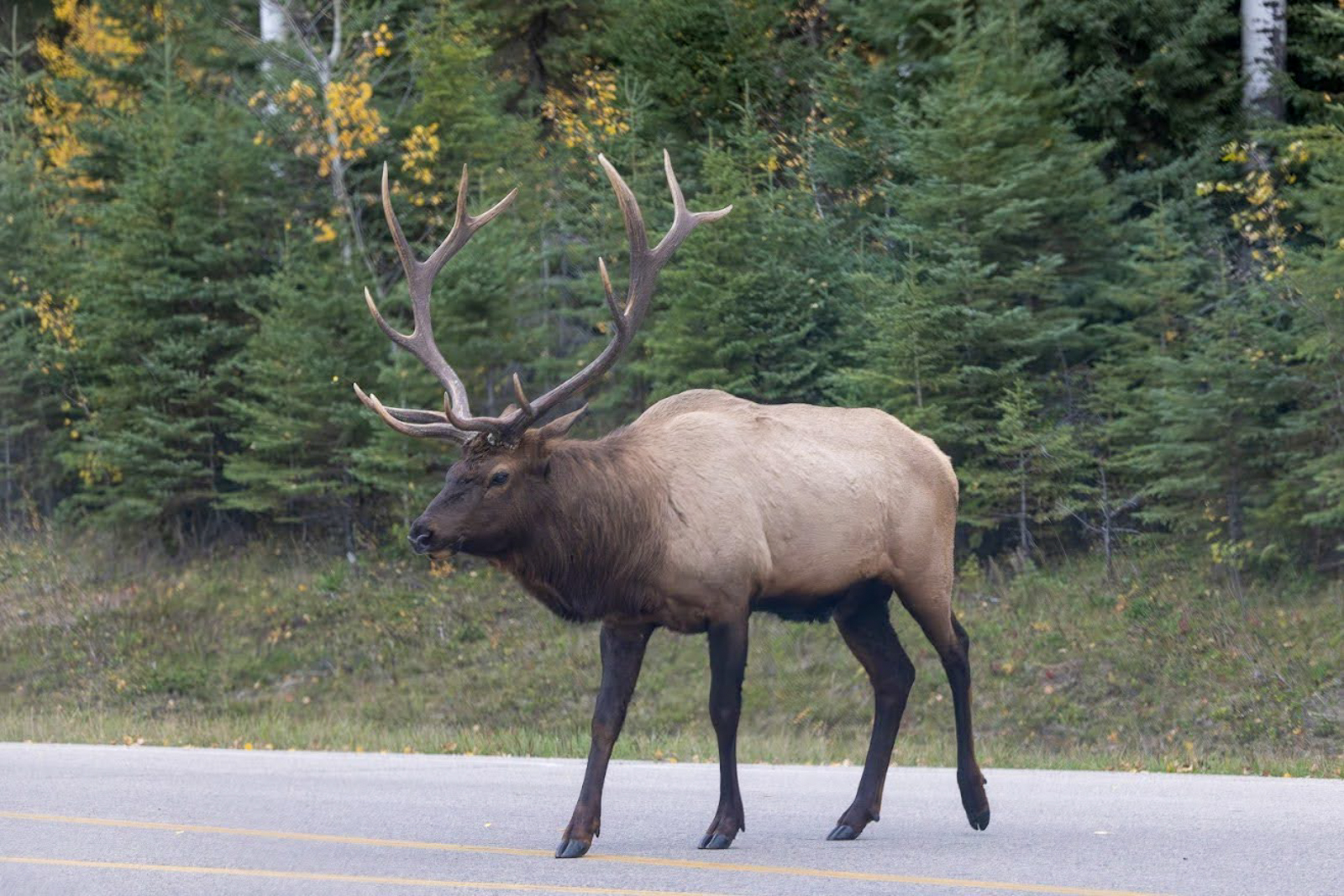
Elk bull © Carol Holmes
The favorite bird of the day was this curious Ruffed Grouse. We flushed him off the side of the road as we were driving in Prince Albert NP. Oftentimes grouse quickly fly off into the forest, but this one decided to give us fabulous looks.
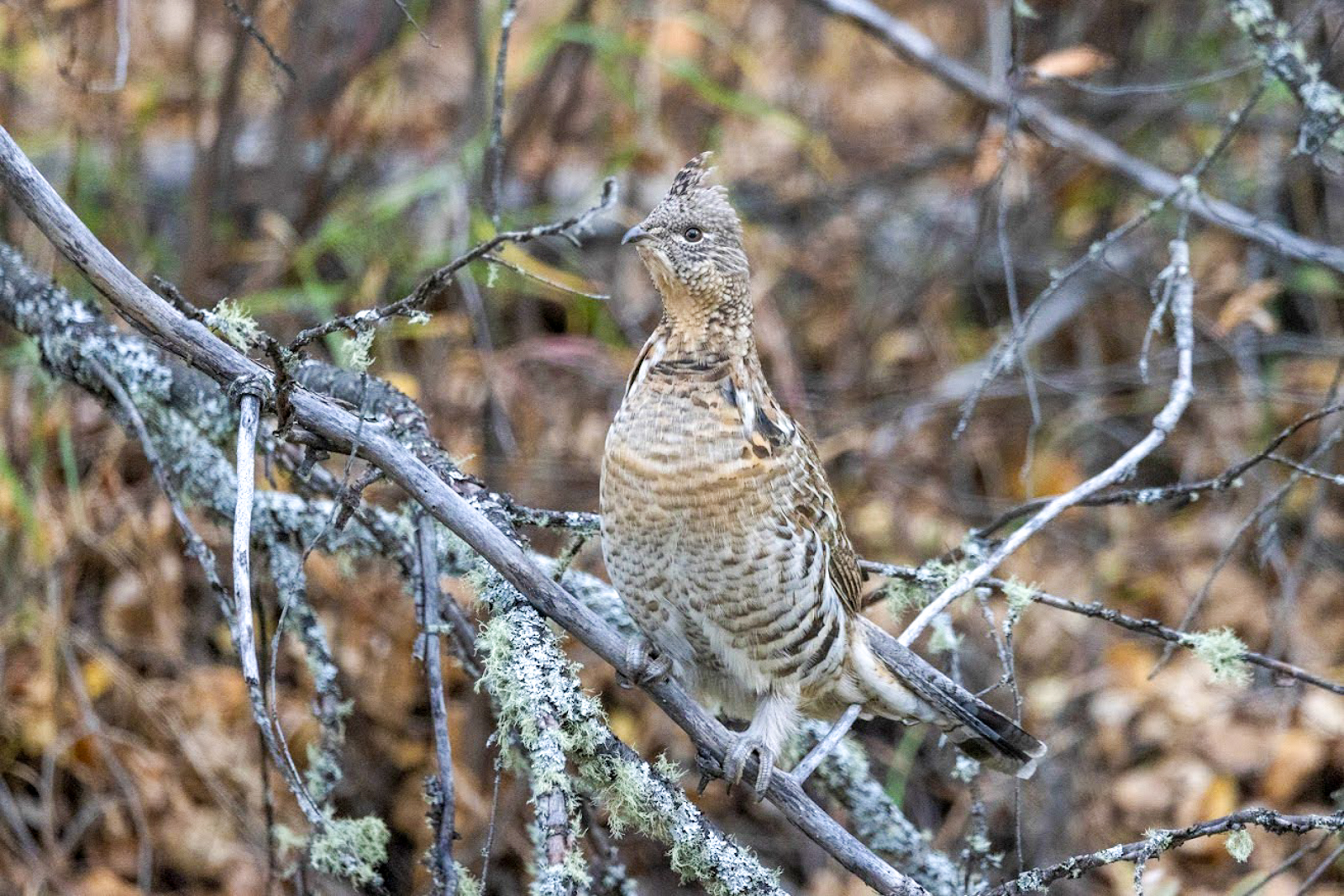
Ruffed Grouse © Carol Holmes
Day 3 delivered a little bit of everything for weather: we started with an unbelievable full-arced rainbow in a light drizzle, followed by overcast skies and high winds for the remainder of the afternoon. Fortunately the day ended beautifully with a calm and sunny sunset in a golden tamarack bog. We can’t control the weather, but we absolutely love it when it cooperates for us!
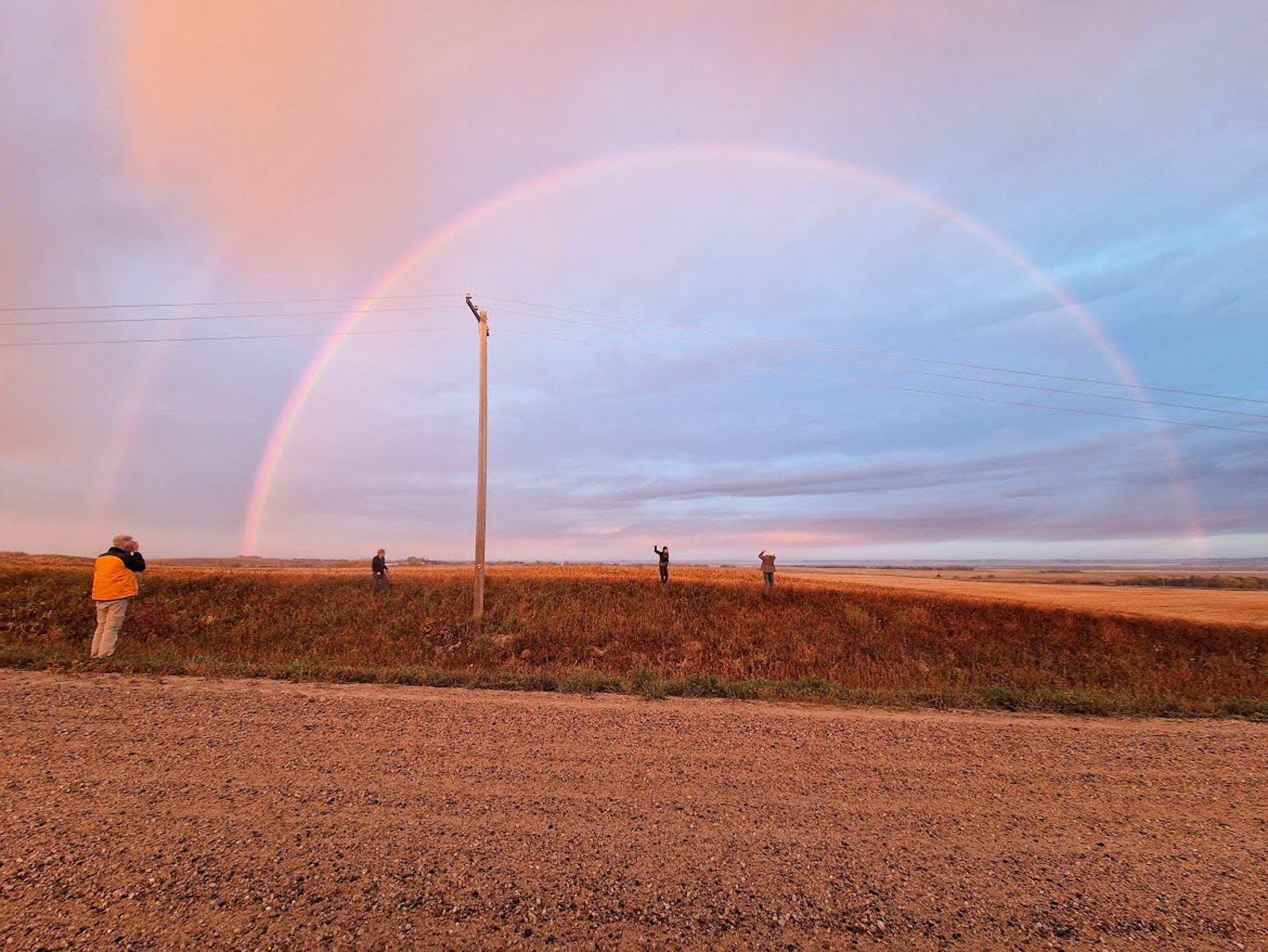
Rainbow watchers © Robin Pollard
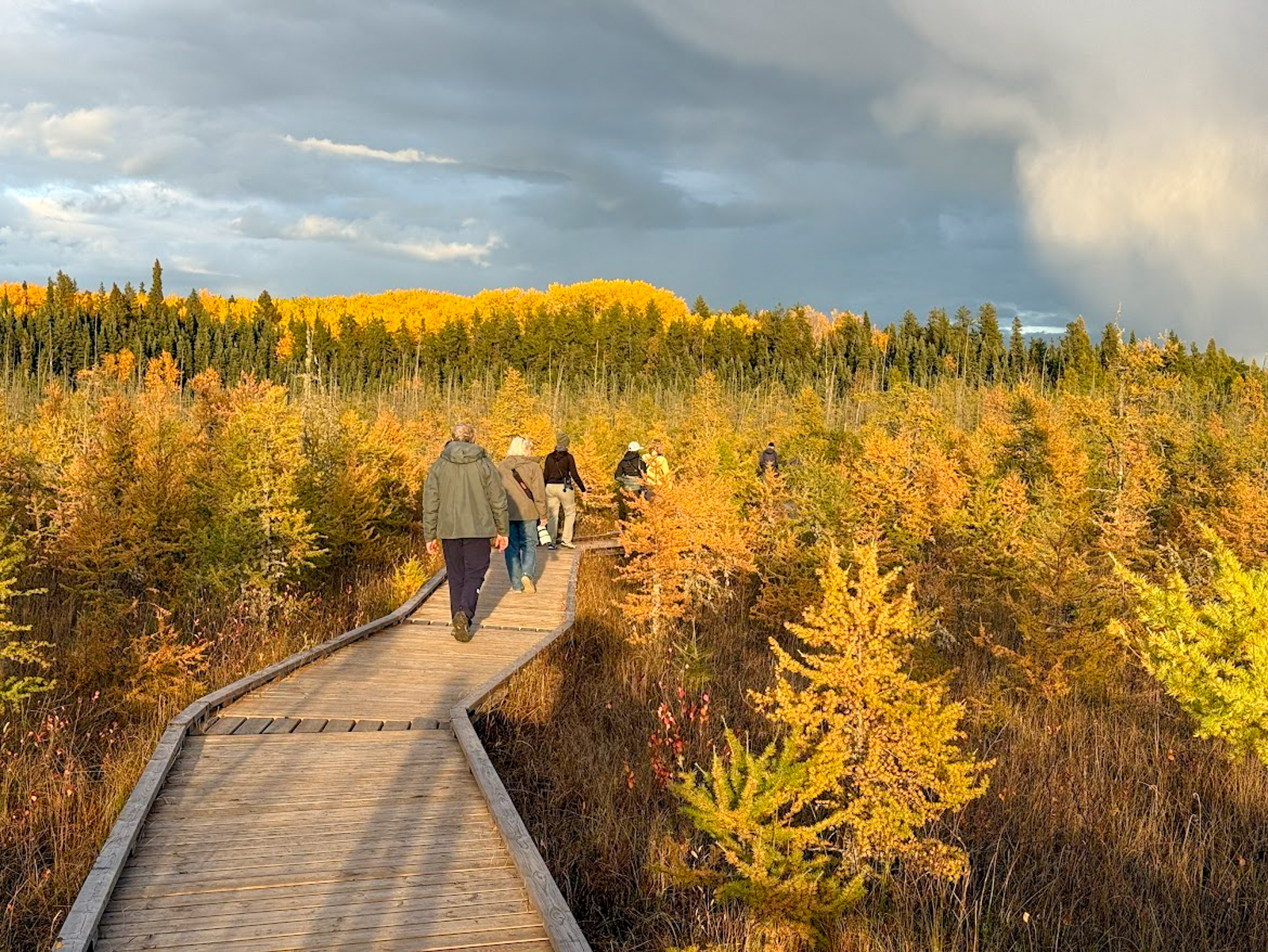
Tamarack Bog hike © Carol Holmes
Day 4: Boreal Birding in Prince Albert NP, and More Marcelin
This cold morning gave us one final short window to try for fickle boreal birds before it got too windy in Prince Albert NP, so we got straight to business. Some local colleagues gave us a tip on finding Boreal Chickadees. As soon as Sarah stepped out of the van at the Beaver Glen Campground, she heard one! We eventually tracked down a pair of Boreal Chickadees which gave brief but satisfying looks.
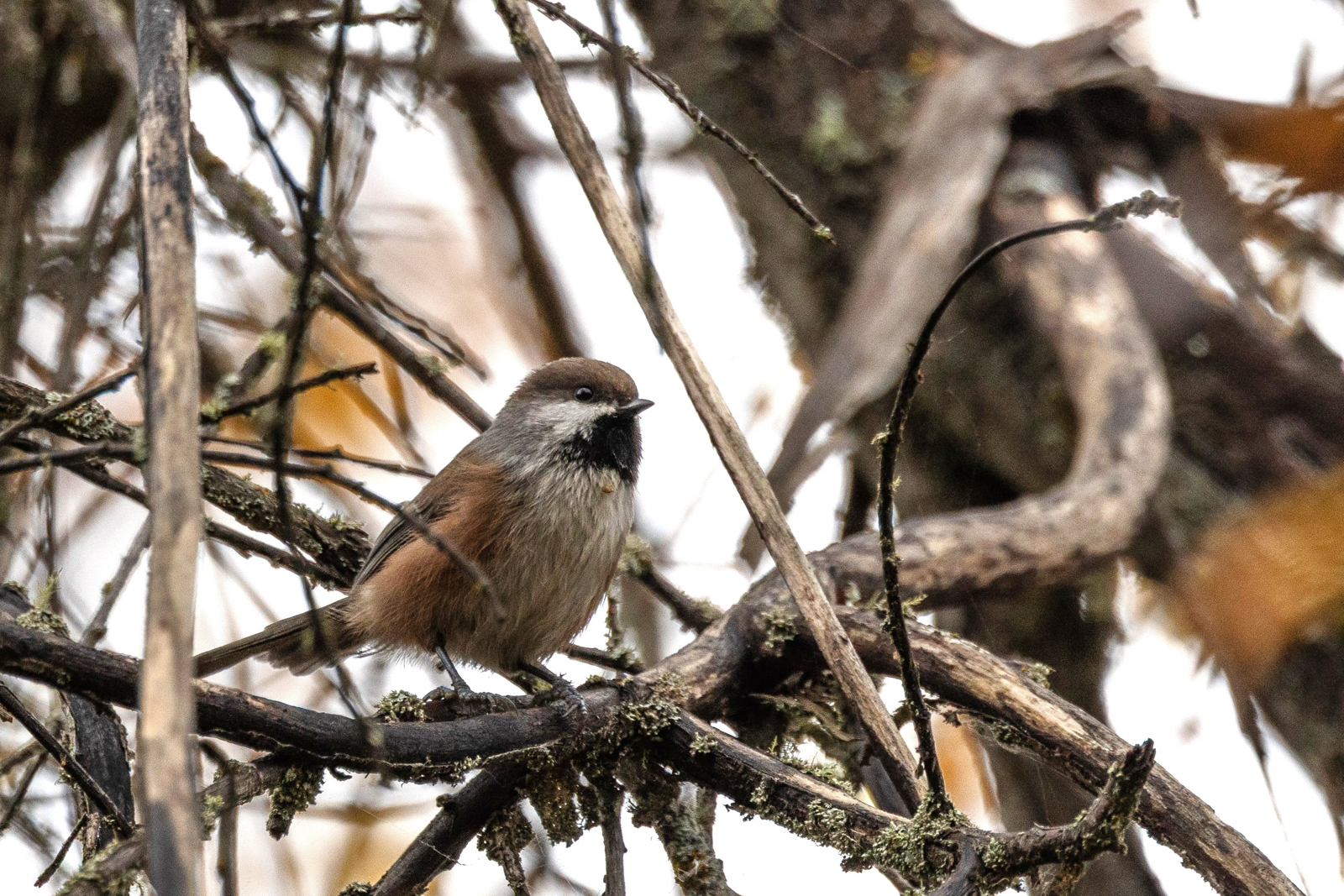
Boreal Chickadee © Carol Holmes
Next we returned to the park’s Boundary Bog Trail, hoping that the second time would be a charm for coveted boreal birds. And it was! Perhaps one of the best birds of the trip was a pair of Spruce Grouse foraging along the trail. This species is one of the hardest boreal birds to find as it dwells deep in large and remote boreal forests and bogs. Only occasionally may you find one quietly pecking at the ground on a dirt trail or gravel road.
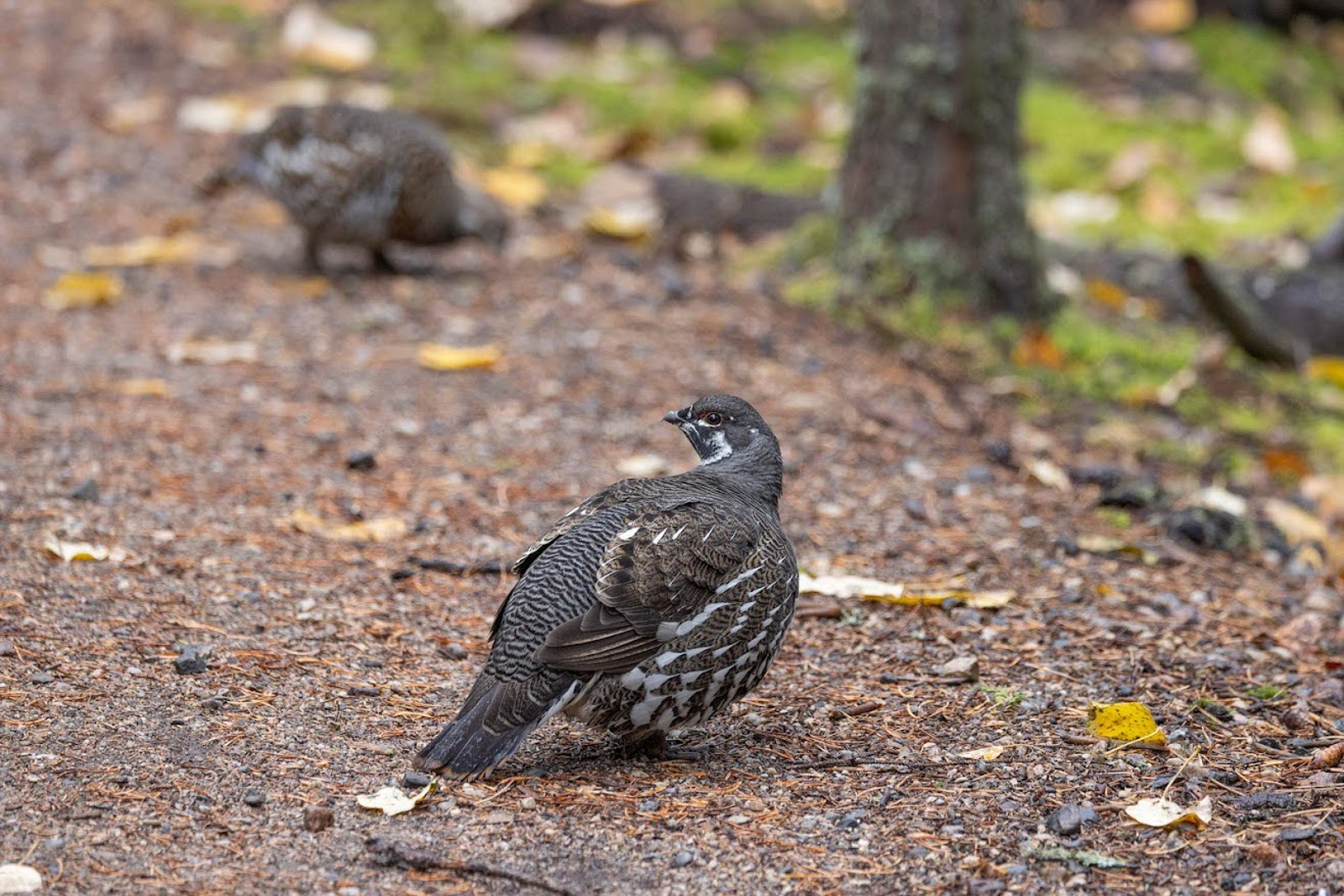
Spruce Grouse pair © Carol Holmes
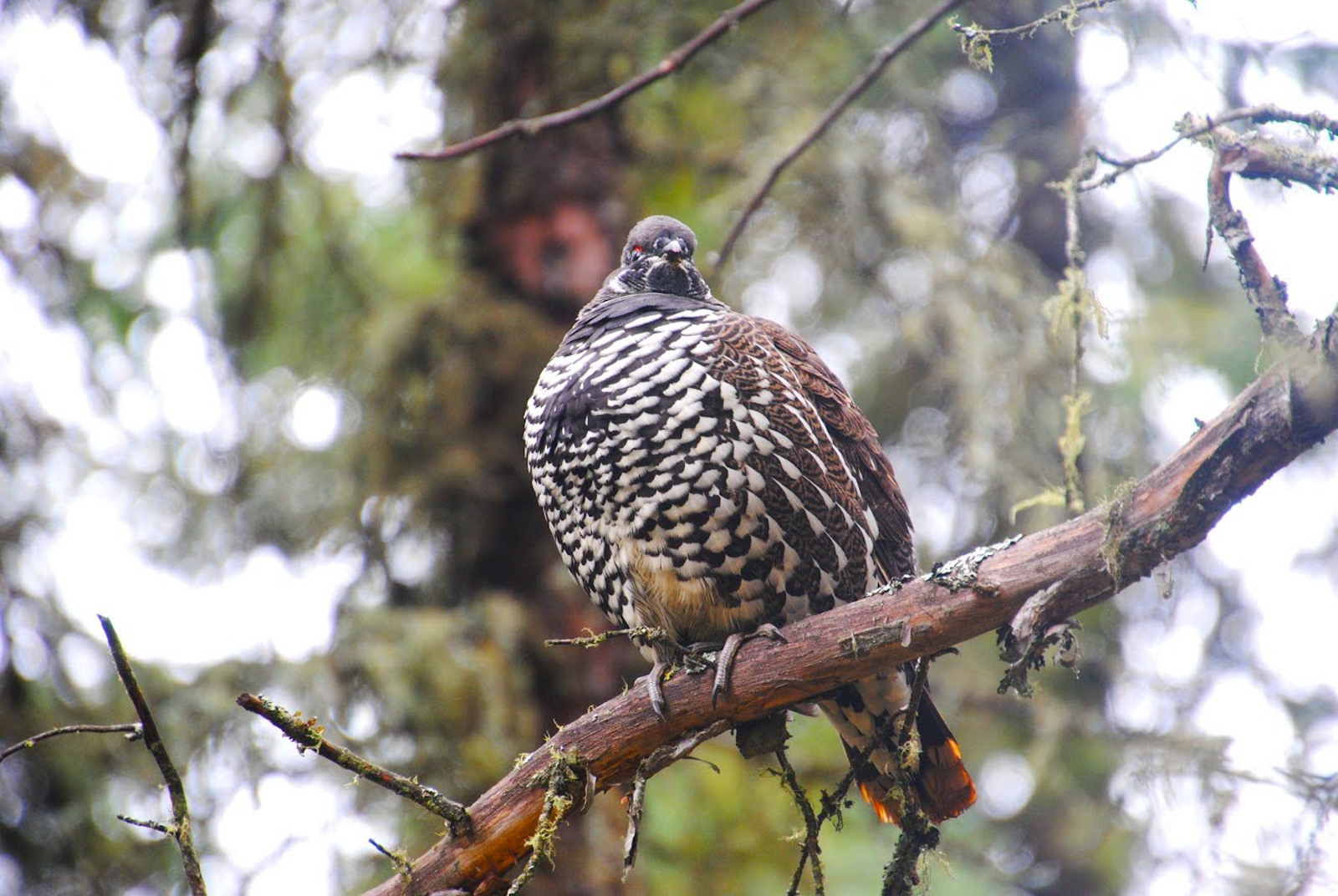
Spruce Grouse male © Alyssa DeRubeis
After finding a couple more fun northerly birds in Prince Albert NP, like White-winged Crossbill, Canada Jay and American Goshawk, we paid the Whooping Cranes one final visit before all of us migrated back home.
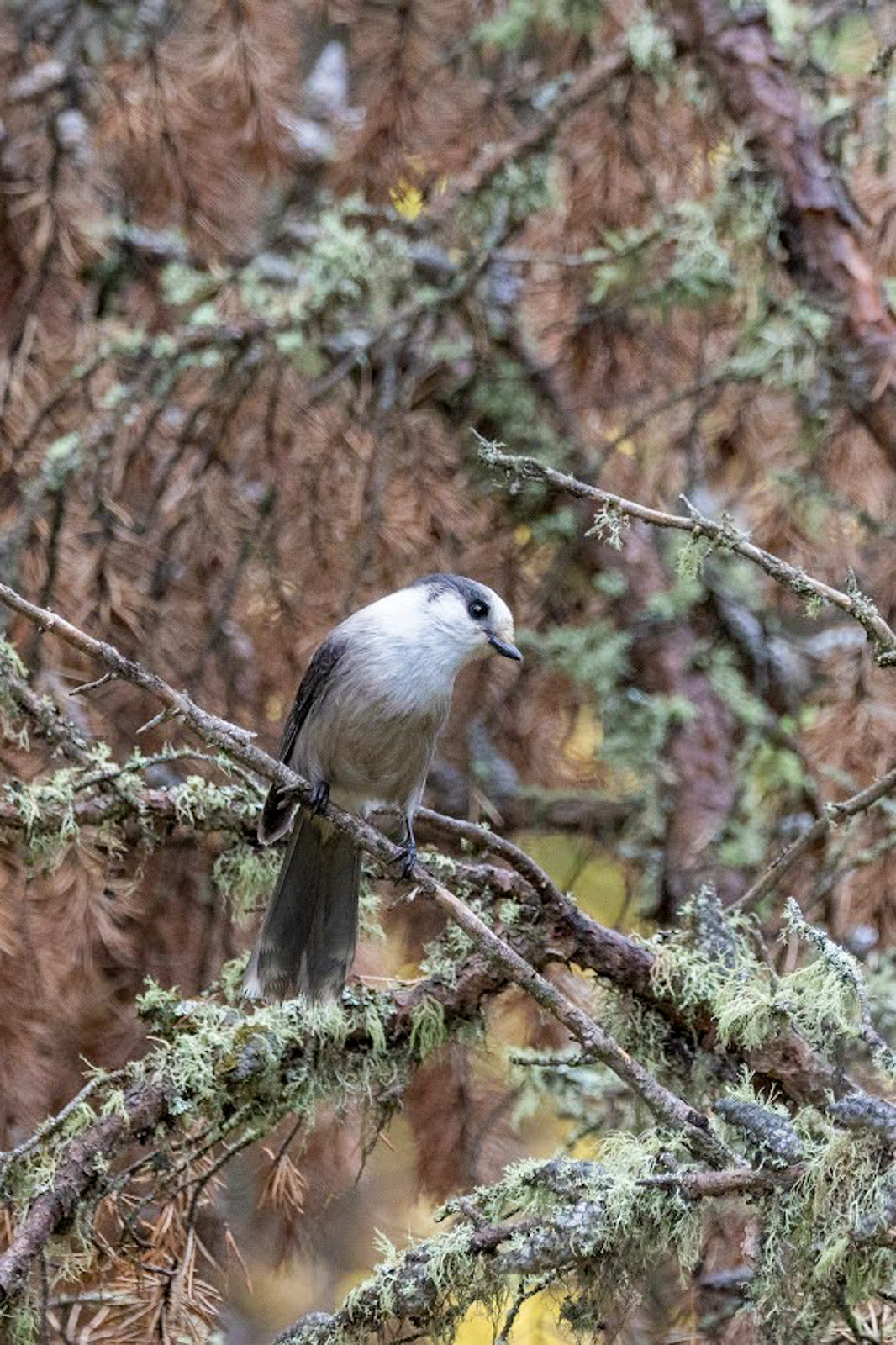
Canada Jay © Carol Holmes
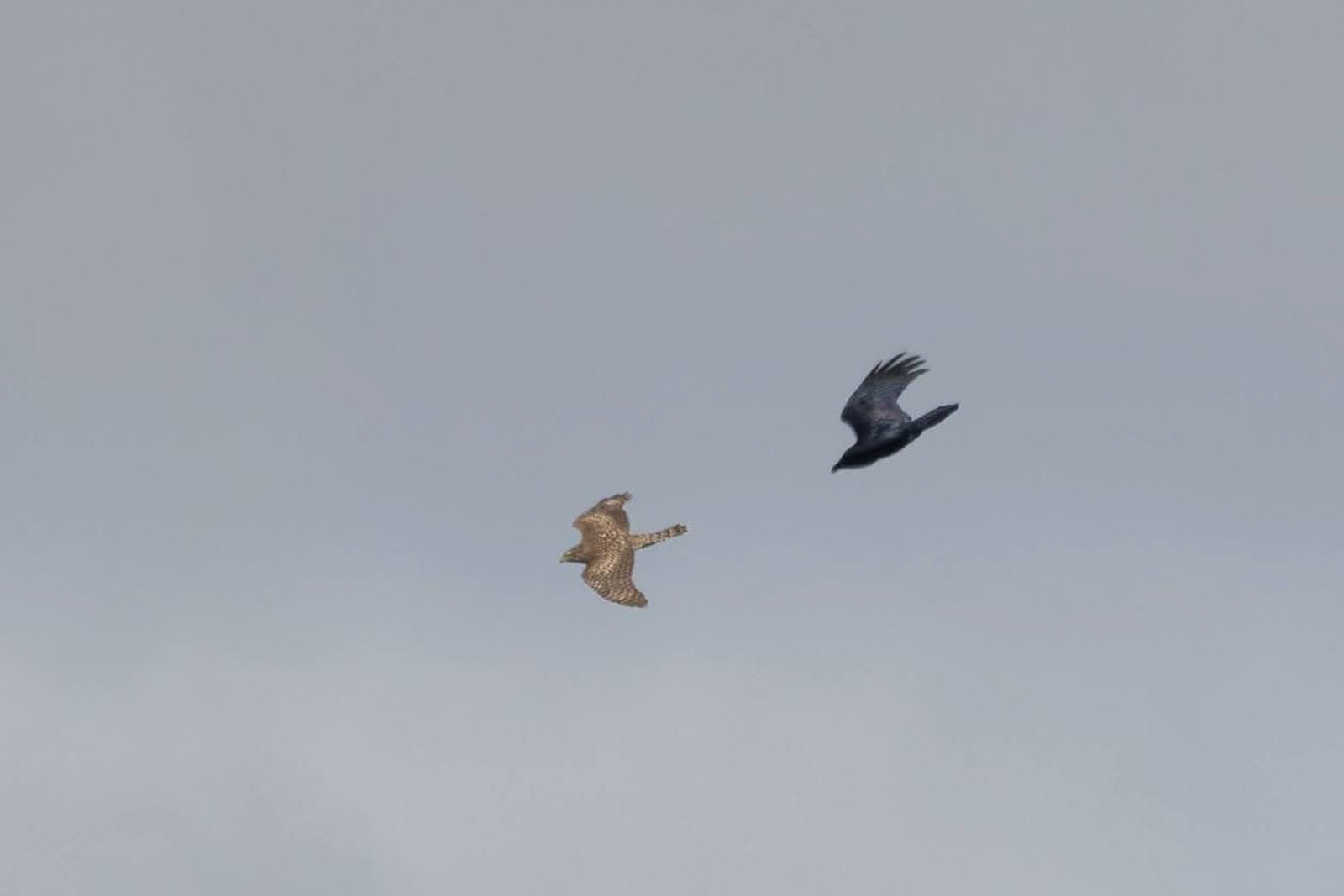
American Goshawk vs Common Raven © Carol Holmes
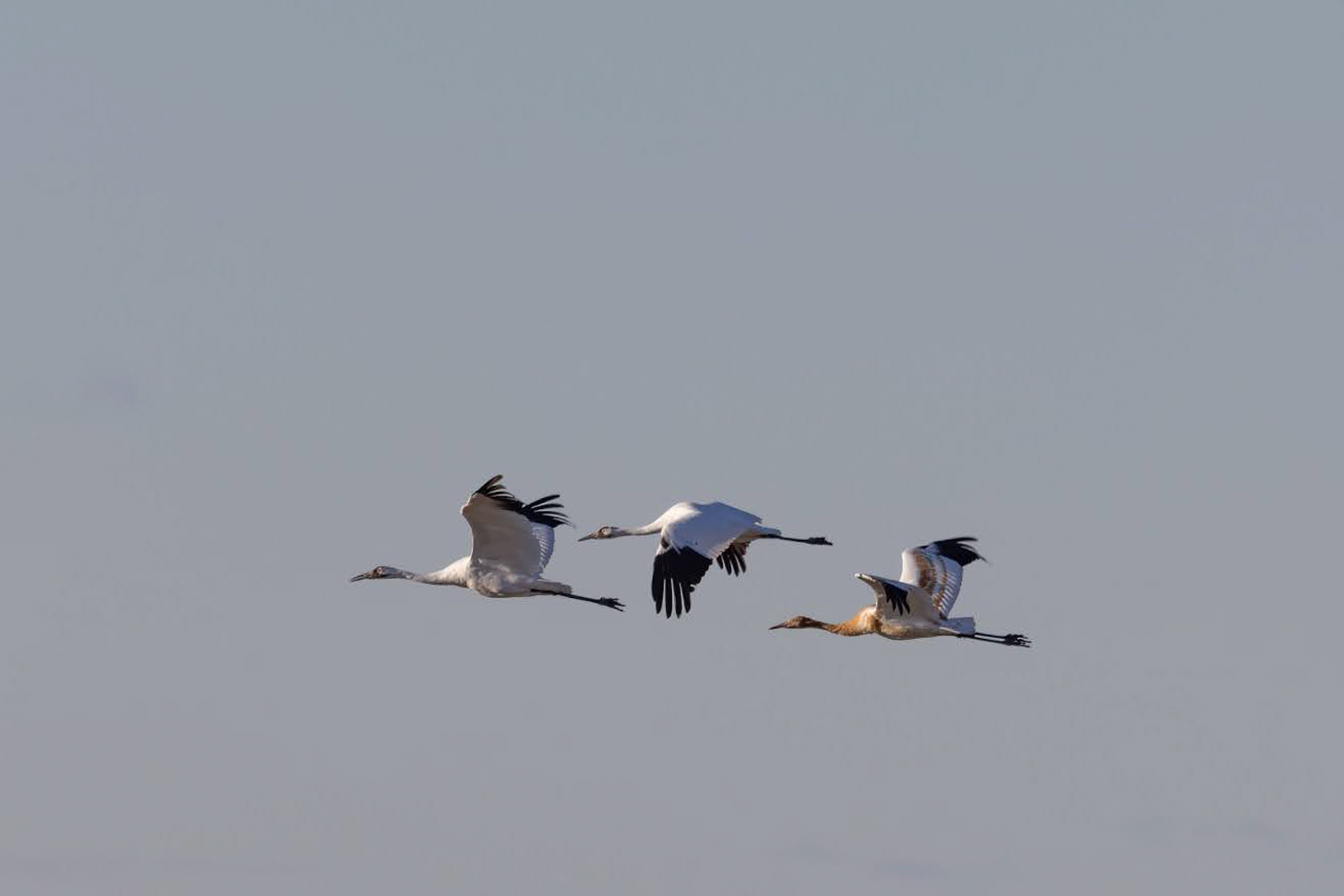
Whooping Cranes in flight © Carol Holmes
Thanks to our group for their positive attitude, patience, and passion for Saskatchewan’s prairie pothole and boreal birds! We were quite pleased with the abundant bird and mammal sightings with a bright yellow aspen backdrop.
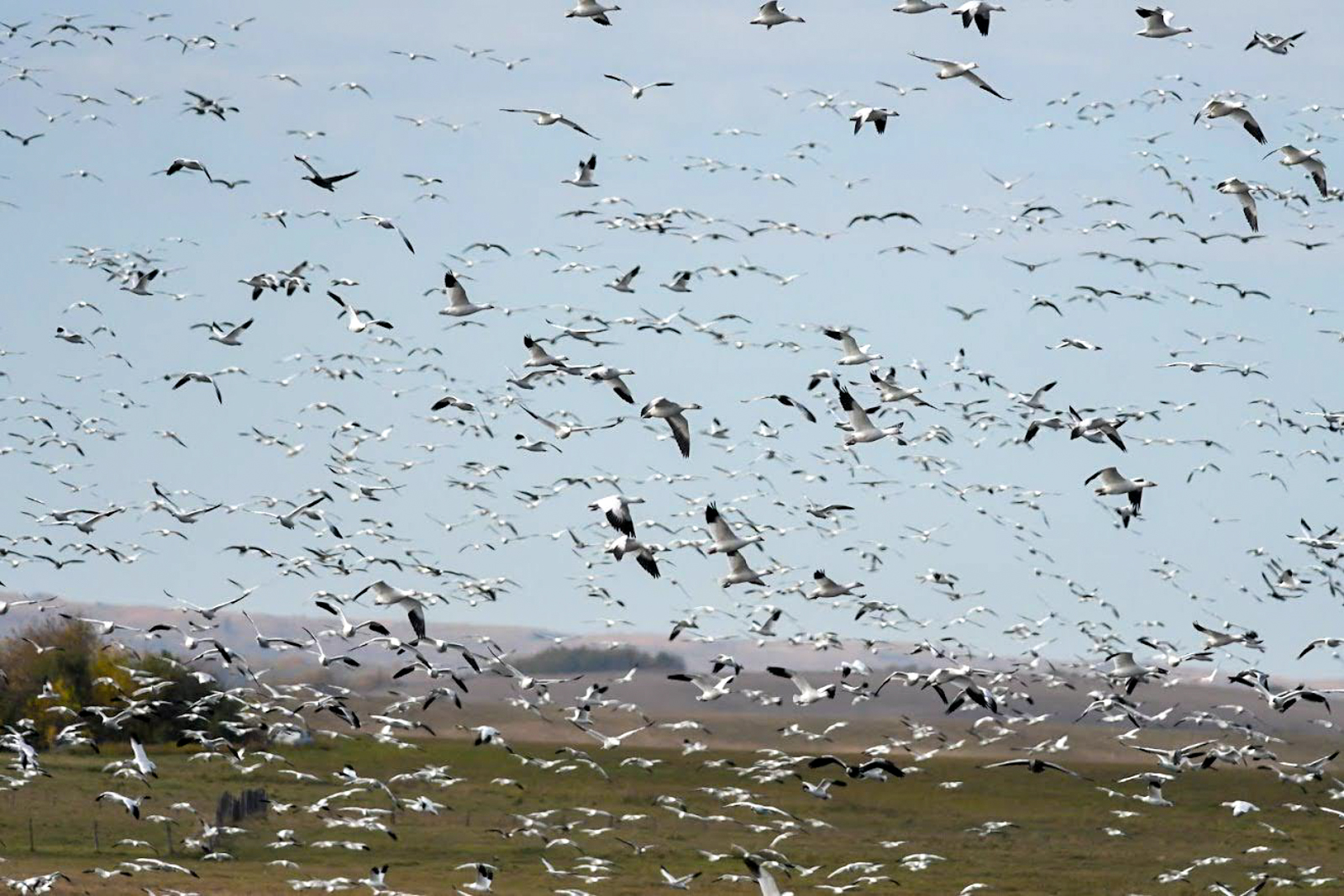
Snow and Ross’s Geese in flight © Sarah Lamond
